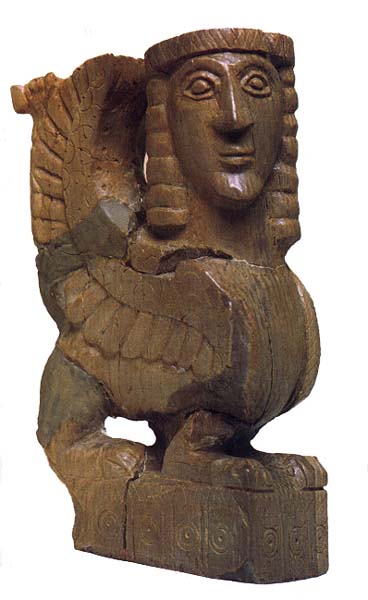
“Riddle me this … ” The tranquil, slightly amused countenance of this winged ivory sphinx contrasts with the usual image of these mythical creatures as mighty lion guardians. This mid-seventh-century B.C. sphinx was recovered from the sanctuary of Hera, goddess of women and marriage, at Perachora, in the territory of Corinth. The delicately carved figure displays curving wings, a triangular face with large eyes and a prominent nose, and a wig with horizontal banding.

Probably originating in Egypt, the sphinx spread to the Near East (where it tended to sport wings) and appeared in Greek culture in the Late Bronze Age (late second millennium B.C.). The ivory for the Perachora sphinx likely came to the region by way of the trade routes of Syria and Mesopotamia.
A sphinx played a key role in the story of Oedipus. That tale told of the ferocious sphinx at Thebes, who devoured all who could not answer its riddle: What goes on four legs in the morning, two at noon and three in the evening? Oedipus famously answered “Man” and was made king of the city. Unfortunately, he also married the city’s queen, not knowing that she was his mother; even a nonviolent encounter with a sphinx, the tale seems to say, could prove disastrous.
Already a library member? Log in here.
Institution user? Log in with your IP address.

